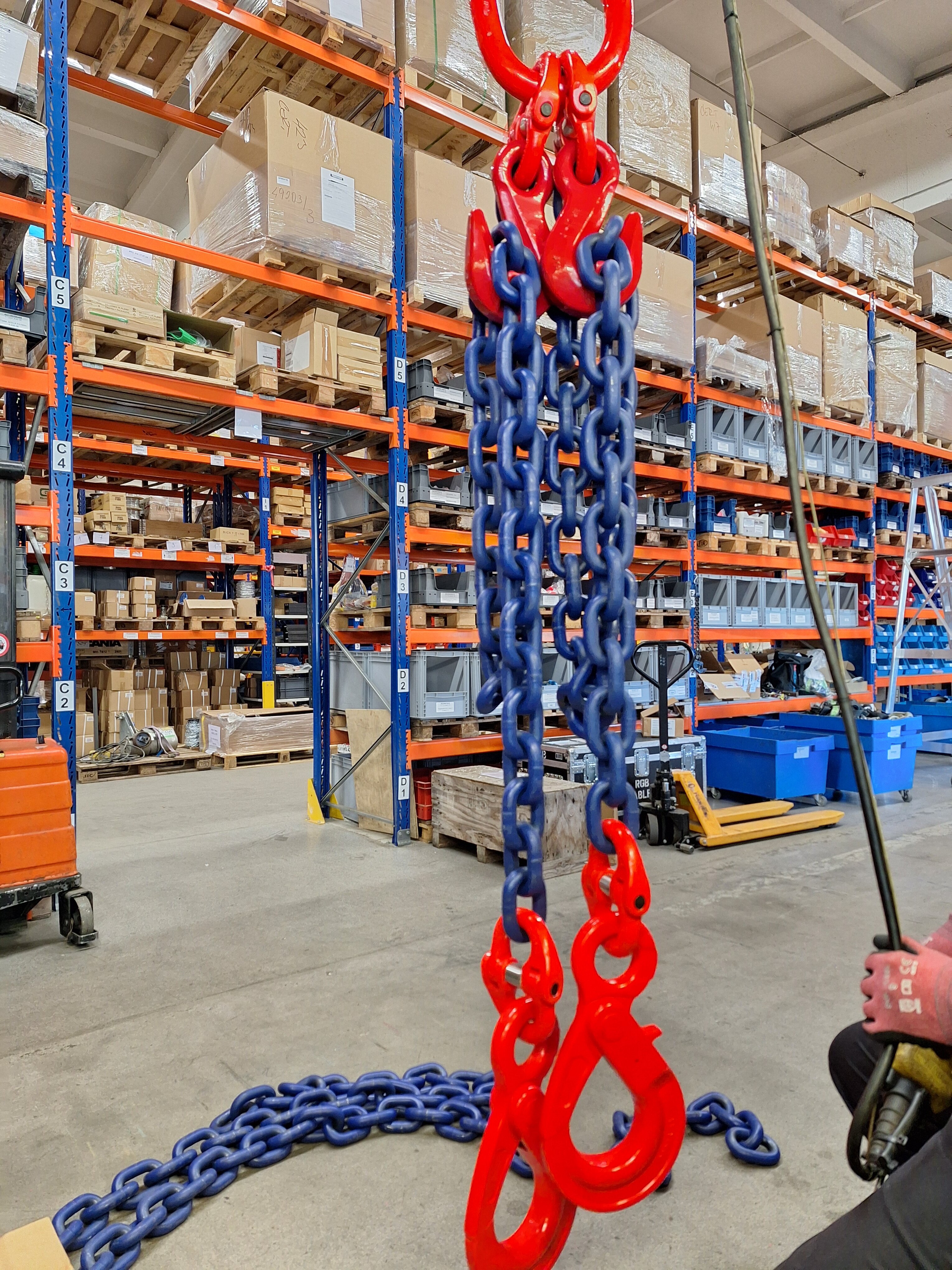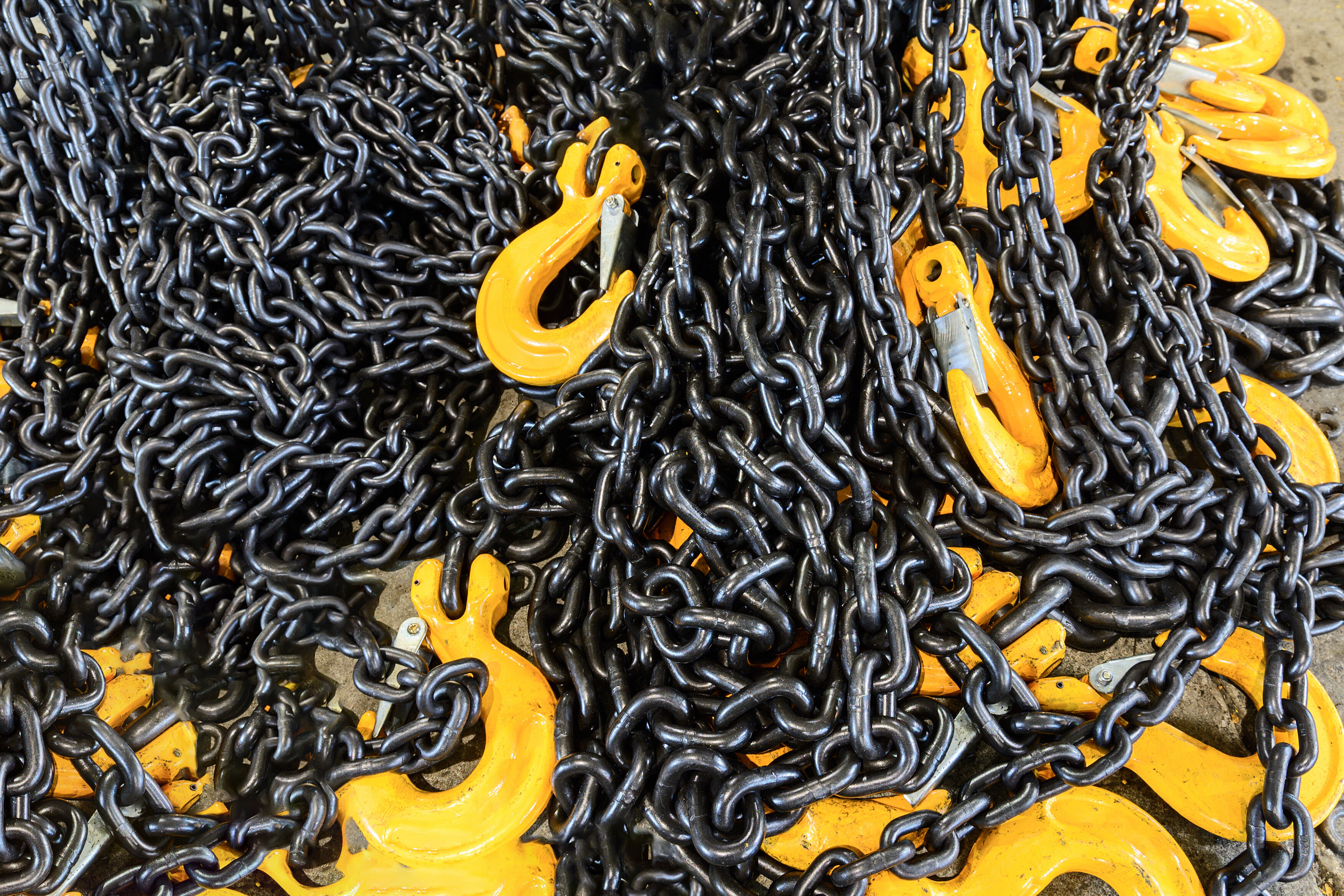How to take care of the equipment that does the heavy lifting for you?
Chain slings operate under heavy loads and in demanding conditions. To keep them in good working order and avoid accidents, proper use, regular inspection, and correct maintenance are essential. The condition of the sling directly determines the safety of both people and loads.

How to use chain slings safely?
- Always check the sling before use – look for cracks, deformations, looseness, and signs of wear
- Do not overload the sling – follow the rated capacity, taking into account the sling angle
- Do not twist or knot chains – this can cause damage or breakage
- Use the sling according to its purpose – do not treat it as a rope or web sling
- Do not use damaged hooks or links – even minor deformation disqualifies a component from use
Inspections and checks – what does the law and good practice say?
1.Daily visual inspection
The operator should check the sling before each use for:
- cracks, signs of corrosion, deformations,
- wear of links, hooks, and connectors,
- legibility of markings (e.g., chain grade, manufacturer).
2.Periodic technical inspections
According to regulations (e.g., Ministry of Economy ordinance), slings must be inspected at least once every 12 months by an authorized person.
During a technical inspection, the following are checked:
- elongation of links (dimensional wear),
- condition of surfaces and welds,
- integrity of components (no cracks, worn connectors),
- completeness and compliance with documentation.
🛑 A sling without a valid inspection must not be used!

All sling components – links, chain, hooks, and connectors – must have the same strength grade. Only then does the sling maintain its load capacity and meet standard requirements. Mixing classes can overload the weakest component and create a serious safety hazard.
Every chain sling must have a permanent identification tag. It contains key information such as working load limit, number of legs, chain grade, and manufacturer. A sling without a tag cannot be identified and must not be used.

Storage and maintenance – simple rules for long service life
- Store slings in a dry place, protected from weather conditions
- Avoid contact with chemicals – they may cause corrosion or structural damage
- Clean slings after use in mud, sand, or moisture
- Do not store slings “in a bundle” – hang them on proper racks or hooks
- Regularly lubricate moving parts if recommended by the manufacturer
User responsibilities
The sling user (e.g., crane operator, foreman, shift supervisor) is responsible for:
- checking technical condition before use,
- rejecting a damaged sling,
- reporting the need for inspection or repair,
- using the sling according to the instructions.

